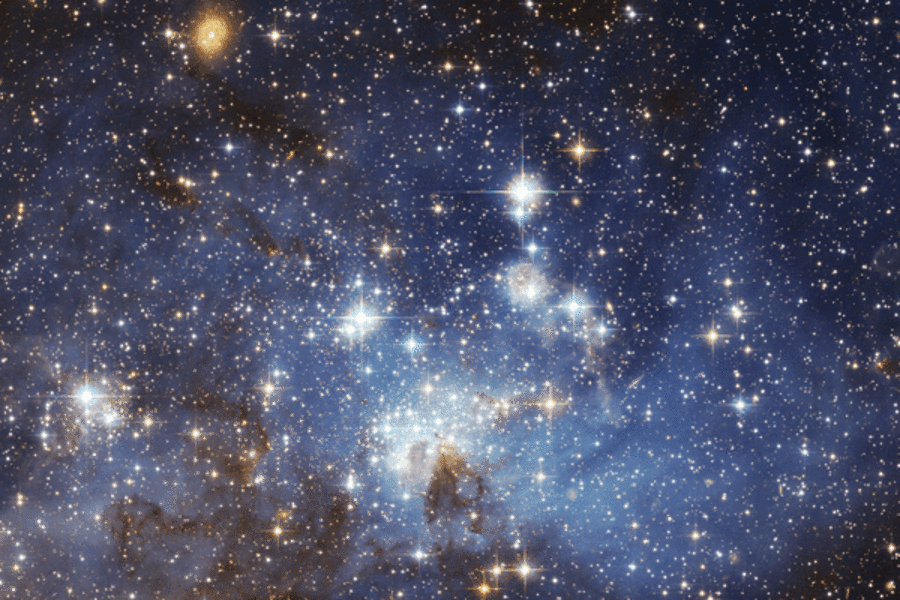Herschel telescope finds 'impossible' star so massive it would dwarf our sun
Loading...
New cosmic observations from the European-built Herschel infrared space observatory have revealed previously hidden details of star form tucked away in distant galaxies. One snapshot reveals what researchers called an 'impossible' star caught in the act of forming.
The new images show thousands of these galaxies and beautiful star-forming clouds draped across the Milky Way.
These images were part of the presentation of the first results from Herschel, which was launched on May 14 of last year, today during a major scientific symposium held at the European Space Agency (ESA), which runs the observatory, in Noordwijk, Netherlands. These results challenge old ideas of star birth, and open new roads for future research.
RELATED: Black holes can devour entire galaxies?
'Impossible' star
In a statement, European scientists said Herschel has discovered an "impossible" star so massive it would dwarf our own sun, but they are perplexed as to how it came to be. Herschel found the embryonic star in the star-forming cloud RCW 120.
The newborn star looks set to turn into one of the biggest and brightest stars in our galaxy within the next few hundred thousand years. It already contains eight to 10 times the mass of the sun and is still surrounded by an additional 2000 solar masses of gas and dust from which it can feed further.
"This star can only grow bigger," said Annie Zavagno, of the Laboratoire d'Astrophysique de Marseille in France.
Massive stars are rare and short-lived. To catch one during formation presents a golden opportunity to solve a long-standing paradox in astronomy.
"According to our current understanding, you should not be able to form stars larger than eight solar masses," Zavagno said.
This is because the fierce light emitted by such large stars should blast away their birth clouds before any more mass can accumulate. But somehow they do form.
Many of these "impossible" stars are already known, some containing up to 150 solar masses, but now that Herschel has seen one near the beginning of its life, astronomers can use the data to investigate how it is defying their theories.
Star birth up close and far away
Herschel can see the stellar birth process because as stars begin to form, the dust and gas surrounding them is warmed up and starts to emit light in the far-infrared wavelengths, which Herschel measures. The diameter of Herschel's main mirror is four times larger than any other infrared space telescope and 1.5 times larger than the Hubble Space Telescope.
This size gives Herschel enough resolution and sensitivity to conduct a census of star-forming regions in our galaxy.
"Before Herschel, it was not clear how the material in the Milky Way came together in high enough densities and at sufficiently low temperatures to form stars," said Sergio Molinari, Istituto di Fisica dello Spazio Interplanetario in Rome, Italy.
Another new space photo released today from the Herschel observatory covers a number of the Milky Way's stellar nurseries and show how stars form in these environments.
Stellar embryos first appear inside filaments of glowing dust and gas draped across the galaxy. These form chains of stellar nurseries, tens of light-years long, wrapping the galaxy in a web of star birth.
Herschel has also been surveying deep space beyond our galaxy, and has measured the infrared light from thousands of other galaxies, spread across billions of light-years of the universe. Each galaxy appears as just a pinprick but its brightness allows astronomers to determine the rate of star birth within it — roughly speaking, the brighter the galaxy the more stars it is forming.
Herschel has also challenged conventional wisdom in this area by showing that galaxies have been evolving over cosmic time much faster than previously thought. Astronomers believed that galaxies have been forming stars at about the same rate for the last three billion years.
But Herschel shows this is not true.
In the past, there were many more so-called 'starburst' galaxies forming stars at 10 to 15 times the rate we see in the Milky Way today. But what triggered this frantic activity is not completely understood.
"Herschel will now let us investigate the reasons for this behavior," said Steve Eales of Cardiff University in Wales.





